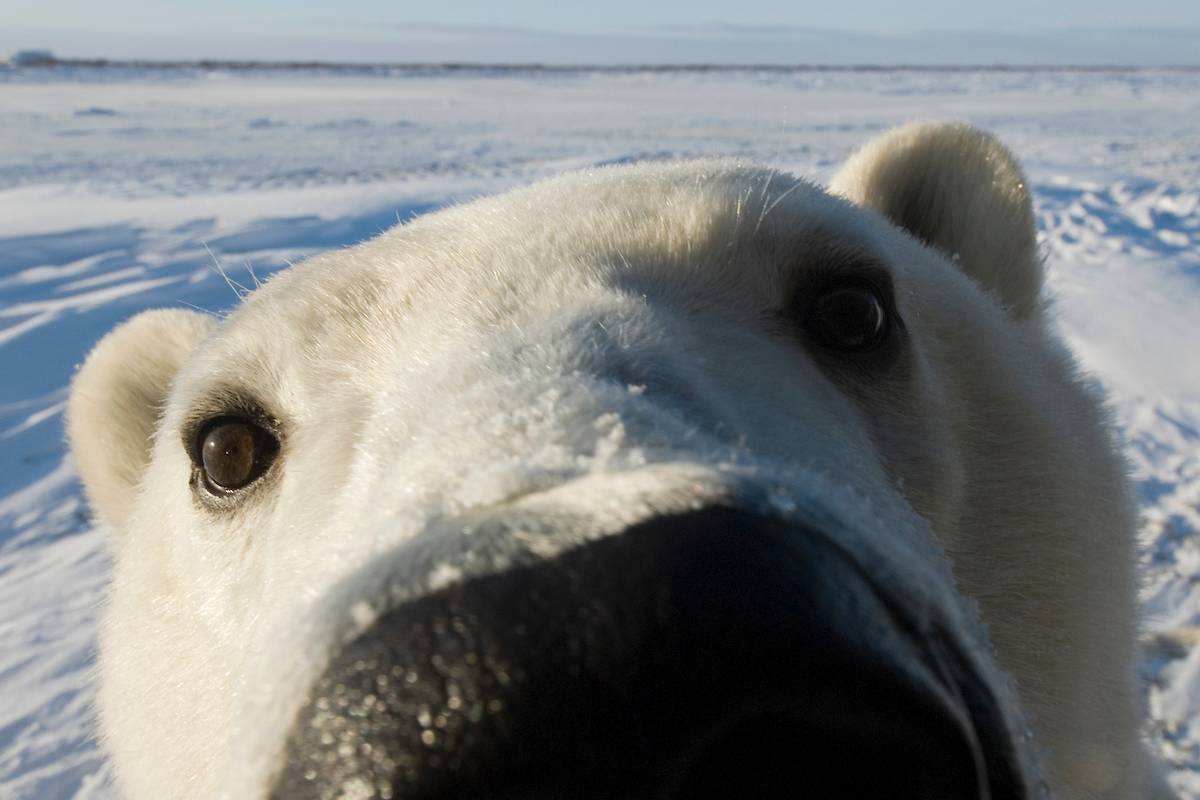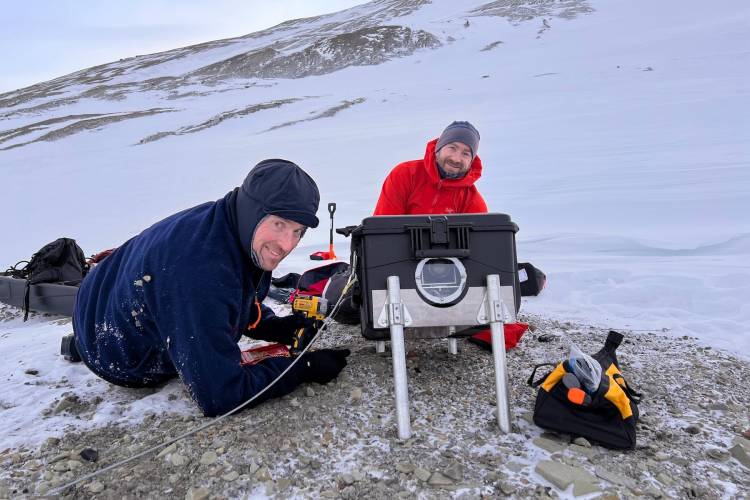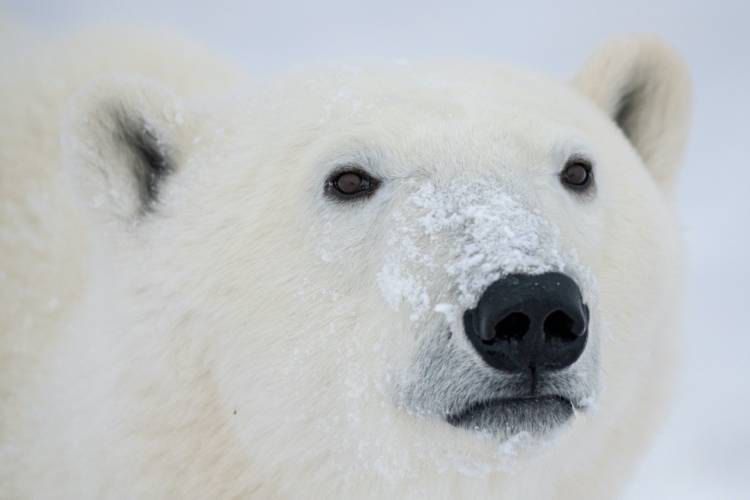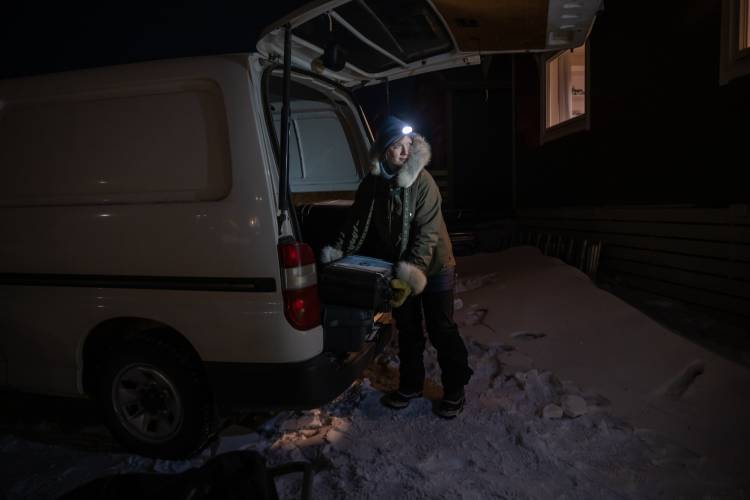What do polar bears do on the sea ice, far from view? How much time do they spend hunting? And how do they spend their days in summer in regions where the sea ice melts and they’re forced ashore, far from their seal prey? These are just some of the questions that may be answered through an ongoing research project.

Photo: Daniel J. Cox
Polar Bear Point of View Videos
By Barbara Nielsen, Director of Communications
MINS
20 Mar 2017
Spring on the sea ice, polar bear point of view video on southern Beaufort Sea, USGS.
Over the last few years, Polar Bears International has supported scientists to gather and interpret and ground-truth data from precision 3D accelerometers (instruments that measure movement) and cameras in collars placed on female polar bears. (Male polar bears’ heads are too small for collars—they slip off.)
The cameras and the accelerometers help the scientists understand what polar bears do when they are out of our sight, both on land and when hunting on sea ice. Scientists will be able to use this calibrated movement data to examine older, more coarse accelerometer data from the past couple of decades to puzzle together what polar bears were likely doing throughout the year (e.g., walking, swimming, hunting, or resting).
Calorie cost
"This is all part of a much larger polar bear energetics project to determine things like the actual calorie cost of walking on the ice and swimming in open water," said Geoff York, senior director of conservation at Polar Bears International. “Understanding how much energy polar bears spend on daily activities is important in a rapidly changing Arctic. As sea ice both retreats and thins, polar bears are changing their movements in some areas—walking further and swimming more frequently. This research will help us understand those new costs.”
To get the play-by-play of a polar bear’s day, researchers from a USGS team outfitted polar bears in the southern Beaufort Sea with cameras to capture their daily activities, behavior, and hunting and feeding rates over two consecutive spring seasons (the footage above, released this year, is from last spring). In addition, the Ontario Ministry of Natural Resources deployed three cameras on polar bears on land in Southern Hudson Bay during the summer. Deployments typically lasted less than ten days.
Scientific value
While the videos are fun to watch, they serve a more serious purpose in helping scientists understand how polar bears spend their time and energy. Scientists will compare data from the sea ice study with data from bears on land.
The short clip above is just a small part of the large amount of video footage. It shows a female bear as she walks across the sea ice, catches a seal, swims, and has an encounter with another bear.
In the case of the bear on land, shown in the video below, she spent 78 percent of her time resting, 8 percent eating berries, 4 percent walking, and 10 percent doing other things, like drinking or grooming. She was most active in the morning (7 a.m. to noon) and least active in the evening (5 p.m. to 8 p.m.).
No bears were harmed during the process and all research was approved through strict animal care/use guidelines.
The project is a team effort involving Polar Bears International, the USGS, explore.org, Ontario Ministry of Natural Resources, York University, San Diego Zoo Institute of Conservation Research, Mehdi Bakhtiari at Exeye (inventor and source of the cams), and Adam Ravetch at Arctic Bear Productions.
Summer on Akimiski Island, James Bay, Ontario Ministry of Natural Resources.















